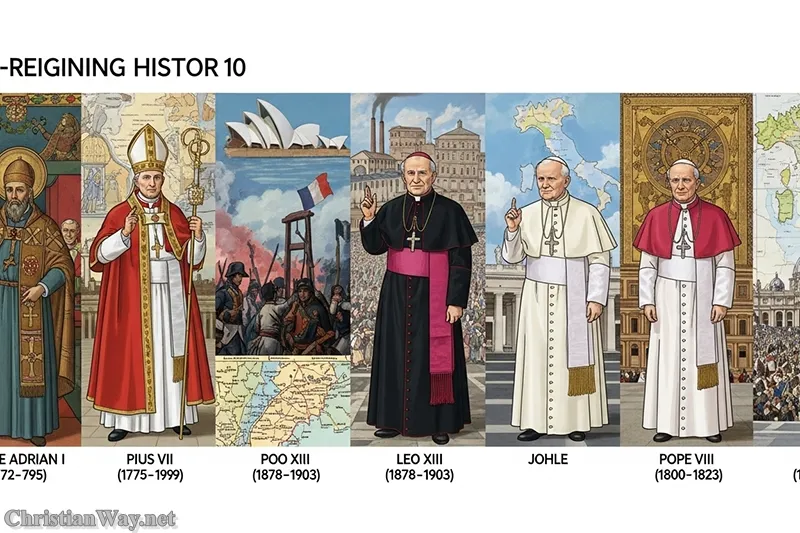Dear friends in Christ,
There are saints whose lives burn so brightly that even centuries later, their fire still warms the world. Saint Catherine of Siena is one such soul — a woman of vision and courage, a mystic whose love for God became a force that renewed the Church and healed hearts.
Born in medieval Italy, in a time of corruption, division, and spiritual confusion, she was neither a scholar nor a cleric, yet she spoke with the wisdom of heaven. Her writings, her teachings of Saint Catherine of Siena, and her holy life continue to call the faithful to deeper prayer, greater charity, and unwavering faith in Christ and His Bride, the Church.

In her, we see the perfect union of contemplation and action — a woman who spent hours in mystical prayer yet walked fearlessly into the world to feed the poor, reconcile enemies, and even counsel popes.
Let us walk together through her remarkable life — a journey from silence to prophecy, from solitude to service, from love to glory.
The Early Life of Saint Catherine of Siena — A Child Set Apart for God
A soul consecrated from birth
St Catherine of Siena biography begins in Siena, Italy, in 1347 — one of twenty-five children born to Jacopo and Lapa Benincasa. From her earliest years, Catherine showed signs of extraordinary grace.
At age six, she had a vision of Christ in glory, surrounded by saints, blessing her from above the Dominican church of San Domenico. That vision ignited her heart with love for God and set the course for her life.
Though her parents hoped she would marry, Catherine made a secret vow of virginity, desiring to belong wholly to Christ. When pressured to accept suitors, she cut her hair as a sign of consecration and withdrew into silence and prayer.
She lived for several years in her family home as a recluse, devoting herself to penance, fasting, and contemplation. Her solitude was not escape, but preparation — the silent forging of a soul that would one day speak with divine authority.
The Call to Serve — From Solitude to the Streets
The hidden life bears fruit
When she was about twenty, Catherine experienced what she called a “spiritual marriage” with Christ. In a vision, Jesus placed a ring on her finger, saying,
“I betroth you to Me in faith, to be Mine forever.”
This mystical union filled her with peace and zeal for souls. She emerged from her solitude, joining the Dominican Third Order, a lay movement that allowed her to serve while remaining in the world.
She began caring for the sick, the poor, and the dying — especially those abandoned by others. During times of plague, she nursed victims with tenderness and courage, even when the disease claimed her own friends.
Her love for humanity flowed directly from her love for God. She once said,
“The soul cannot live without love. It must love something, for it was created to love.”
Through this love, she became a living bridge between contemplation and action.
The Teachings of Saint Catherine of Siena — Love That Transforms
Wisdom from divine intimacy
Though uneducated, Catherine dictated thousands of letters and her most famous work, The Dialogue of Divine Providence — a spiritual masterpiece written through ecstatic prayer. In it, she records conversations between her soul and God the Father, filled with profound theological insight and warmth.
Her writings reflect the essence of her teachings of Saint Catherine of Siena:
- God’s love is infinite, flowing like an ocean toward all creation.
- True holiness is found not in emotion, but in the will — choosing love even when it costs us.
- The soul grows by humility and self-knowledge, which open the way to divine knowledge.
She wrote:
“You are rewarded not according to your work or your time, but according to the measure of your love.”
Her spirituality is deeply incarnational — she saw the cross as the bridge between heaven and earth, where divine mercy meets human misery.
Catherine’s theology, like that of the great mystics, was not learned from books but from union with God.
The Mystic and the Stigmata — Sharing the Suffering of Christ
Marked by love
In 1375, while praying in Pisa, Catherine received the stigmata of St Catherine of Siena — the invisible wounds of Christ impressed upon her body. They were hidden from others during her life but became visible after her death.
This mystical grace was the fruit of her total identification with Christ crucified. Her prayer was always Christ-centered, rooted in the Eucharist, where she drew strength and intimacy with her Beloved.
She often said that the Eucharist was her food and her fire — she lived for Holy Communion and sometimes survived on nothing else for weeks at a time.
In her suffering, she found joy, echoing Saint Paul’s words:
“I rejoice in my sufferings for your sake, and in my flesh I complete what is lacking in Christ’s afflictions.” (Colossians 1:24)
Saint Catherine and the Church — Voice of Reform and Unity
A woman sent to speak truth to power
Perhaps the most astonishing aspect of Catherine’s life was her role as a reformer and peacemaker in a divided Church. The Avignon Papacy had relocated the pope from Rome to France, leaving Italy in turmoil and scandal.
Catherine, guided by divine inspiration, wrote letters to popes, cardinals, and rulers with clarity and boldness. To Pope Gregory XI, she wrote:
“Be a manly man, and return to Rome, where you will be the true shepherd of the flock.”
Through her prayers, counsel, and courage, Gregory XI finally returned the papacy to Rome in 1377, restoring unity and moral strength to the Church.
Her letters of St Catherine are among the most remarkable documents of medieval spirituality — filled with passion, humility, and prophetic power. They show that holiness is not passive but active, that love for the Church sometimes demands bold truth spoken with reverence.
Saint Catherine the Peacemaker and Servant
Healing a wounded world
In her final years, Catherine worked tirelessly to bring peace among warring Italian city-states. She mediated conflicts, reconciled enemies, and comforted the afflicted.
Her presence inspired conversion wherever she went. Even hardened sinners, upon meeting her, wept and turned back to God. Her strength came from her deep union with Christ, who spoke to her heart:
“Dearest daughter, I am He who is, you are she who is not.”
This humility — the recognition that all holiness is grace — gave her the power to act without pride, to serve without fear.
The Dialogue of Divine Providence — Catherine’s Masterpiece
A soul’s conversation with God
The Dialogue of Divine Providence is one of the most beautiful spiritual texts in Christian history. In it, God speaks to Catherine of the soul’s journey toward perfection, emphasizing four key truths:
- Knowledge of self and knowledge of God lead to humility and trust.
- Love of neighbor flows naturally from love of God.
- Prayer is the means by which grace is received and strengthened.
- Union with Christ crucified is the summit of holiness.
In the Dialogue, God tells her:
“The soul that loves Me cannot keep from serving others.”
Through this, Catherine teaches that contemplation without action is incomplete, and action without prayer is empty. Both must flow together like streams from the same fountain.
The Final Years and Death of Saint Catherine of Siena
A life poured out in love
In her later years, Catherine’s body was worn by fasting and her intense apostolic work. Yet her soul burned brighter than ever. She offered herself as a living sacrifice for the renewal of the Church.
In 1380, at just thirty-three years old — the age of Christ — she died in Rome, surrounded by her spiritual children. Her final words were a prayer:
“Father, into Your hands I commend my spirit.”
Soon after her death, miracles were reported through her intercession. She was canonized by Pope Pius II in 1461 and declared a Doctor of the Church by Pope Paul VI in 1970, alongside Saint Teresa of Ávila — two women whose voices still guide the Church in holiness and reform.
Her feast day is celebrated on April 29, shared by both the Church in Italy and the universal Church. She is honored as a patron saint of Italy and a co-patroness of Europe, alongside Saint Benedict and Saint Bridget of Sweden.
The Legacy of Saint Catherine of Siena — Light for the Church Today
Saint Catherine of Siena remains a radiant example of what one soul, united with God, can do. Her life reminds us that holiness is not bound by education, status, or gender, but by love.
She shows that mystical union with God leads not to withdrawal but to mission — to heal, to speak, to act. Her words, centuries old, still ring with truth:
“Be who God meant you to be, and you will set the world on fire.”
In a time of division and confusion, her witness calls us back to the essentials: love for God, fidelity to the Church, and service to humanity.
Lessons from the Life of Saint Catherine of Siena
1. Prayer leads to action
Catherine teaches that true contemplation must bear fruit in love and service.
2. Holiness is found in the ordinary
She began as a simple laywoman, proving that sanctity is possible for everyone.
3. Courage is born from faith
Her fearless counsel to popes and rulers came from trust in God, not pride.
4. Charity is the heart of reform
She sought to renew the Church not by criticism but by love and sacrifice.
5. The soul grows through humility
Her wisdom came from self-knowledge — seeing herself as nothing, yet infinitely loved.
Saint Catherine and the Modern World
In our age of noise and division, Saint Catherine of Siena speaks with fresh relevance. She calls us to the stillness of prayer and the courage of truth. She reminds us that reform begins in the heart, and that unity is born from love, not from compromise.
For those who seek God amid the chaos of modern life, she offers this simple advice:
“Build a cell within your heart, and never leave it.”
That “cell” is not isolation, but interior prayer — a place where the soul rests in God and listens for His voice.
Her life continues to inspire laypeople, religious, and clergy alike — especially women called to leadership and holiness. She stands as proof that divine wisdom can dwell in the humblest of hearts.
🕯️ Reflect and Pray
Eternal God,
You filled Saint Catherine of Siena with the fire of Your love
and made her a fearless voice for truth and unity.
Grant that, through her intercession,
we may seek You in prayer and serve You in love,
bringing peace where there is discord
and faith where there is doubt.
Teach us, as You taught her,
that in loving You, we find the strength to love the world.
Through Christ our Lord. Amen.
May the courage and purity of Saint Catherine of Siena
inspire your heart to live in truth, love, and joyful service of God.
— Fr. John Matthew, for Christian Way











